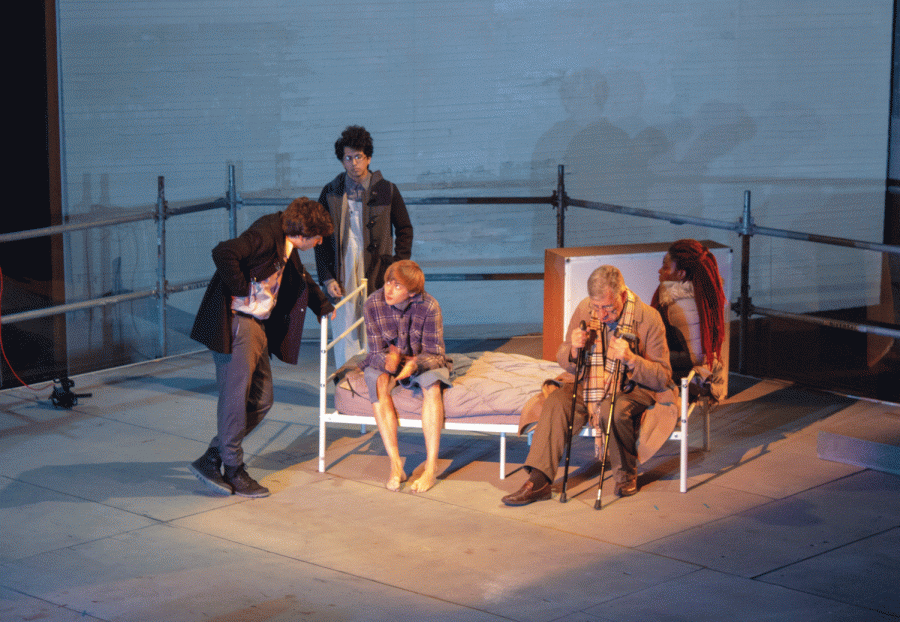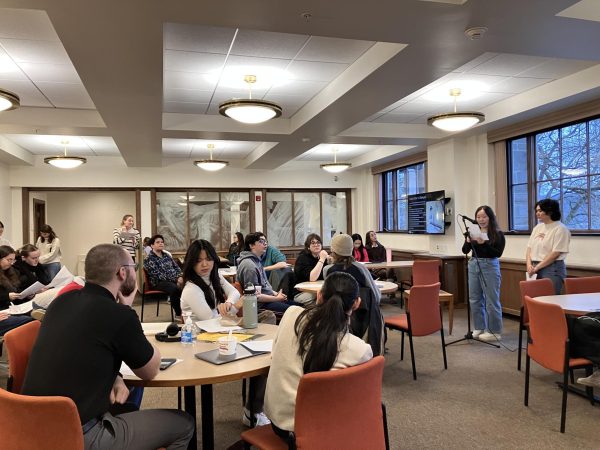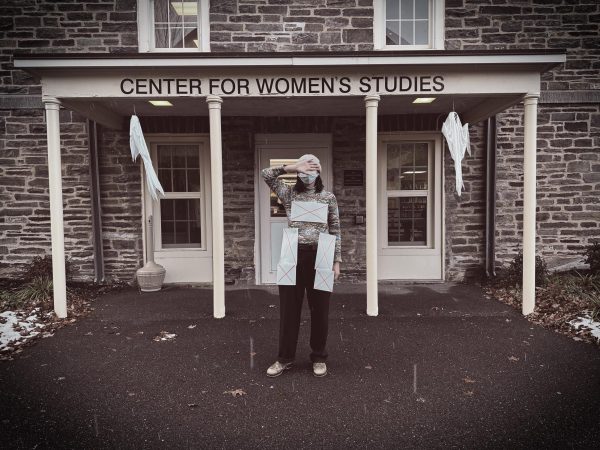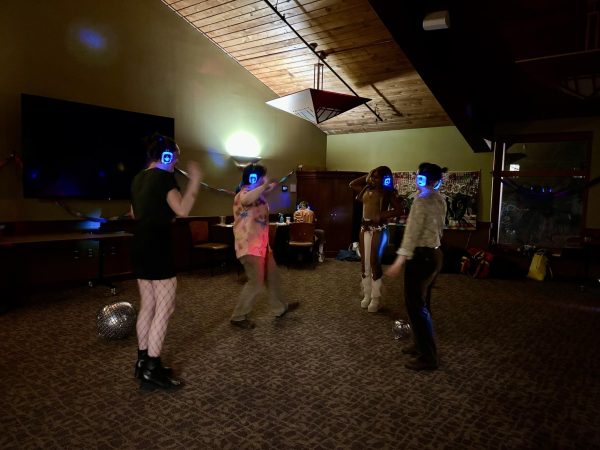Abstract Rendition of “The Seagull” Proves Successful
On opening night of “The Seagull,” the atmosphere of Brehmer Theater was one of mild confusion; as people filed into their seats, a lone actor stood in the center of the stage, reciting information about the playwright, Anton Chekhov, while the stage hands worked noisily behind him to construct a bed frame for the production. At first, people remained quiet, but began to speak over him until he was completely drowned out by the noise of the crowd and the crew—a lone actor speaking to no one.
There was another source of confusion as well: the seating for the show was limited only to the balcony, and there was a makeshift stage constructed as an extension to the balcony. The entire performance was held up close and personal, oftentimes with actors and actresses seeming to appear from within the audience as they made their way to the stage.
Chekhov’s classic play “The Seagull,” written in the late nineteenth century, was turned on its head by Colgate’s production. In the original play, time is linear. For Colgate’s production, director Adrian Giurgea changed the order of the acts and told the story in a series of flash-backs instead. “The Seagull” tells a tale of unrequited love, fame and the desperate longing that the individual characters experience throughout the play.
Not only did Giurgea alter the time progression, but he also added snippets from modern life into the production. For example, there was a rave scene with modern costumes that featured hoodies with ears and crop tops. Giurgea also focused on the inclusion of technology. Technology is not just mentioned in the play, it becomes central to the storytelling. The stage was surrounded by screens that projected set designs. There were scenes that involved the use of a webcam, showing the characters gathered around a table in a place offstage and out of sight.
“The main focus is people,” senior Chau Le said. “There is a psychodrama happening amongst the characters. Because the sage is lofted and there is an involvement of technology, it makes the production much closer to the audience.”
Giurgea brought “The Seagull” into modernity with this production.
“This is theater. It is continuous and it is always happening in the present. We always talk about it in the present. It is always contemporary. I included little things like phones to make it more accessible to people from your generation,” Giurgea said.
To describe the plot, “The Seagull” focuses on the character of Konstantin, the son of a famous actress who wanted to be- come a famous writer. Konstantin struggles to achieve his goal and is often put in direct opposition to his mother, who denounces his craft and instead is fascinated with an- other writer, her boyfriend, who falls in love with the woman Konstantin loves. It is an extremely messy love triangle. Konstantin attempts to win back his love by presenting her with a seagull that he shot dead, claiming he would do the same to himself if she didn’t love him back. Ultimately, he (spoiler alert) commits suicide while the rest of the characters are offstage, gambling around a table and moving on with their lives. Konstantin remained motionless in his “death” as the rest of the cast took their bows around him, signaling the finality of his character’s suicide.
“It was powerful and impactful,” sophomore Tamar Japaridze said. “But I definitely don’t understand everything right now.”
Colgate’s unique rendition of the play was abstract; however, it was successful in bringing to life the same themes from late nineteenth-century Russia into a modern day context.
Contacth at [email protected].





